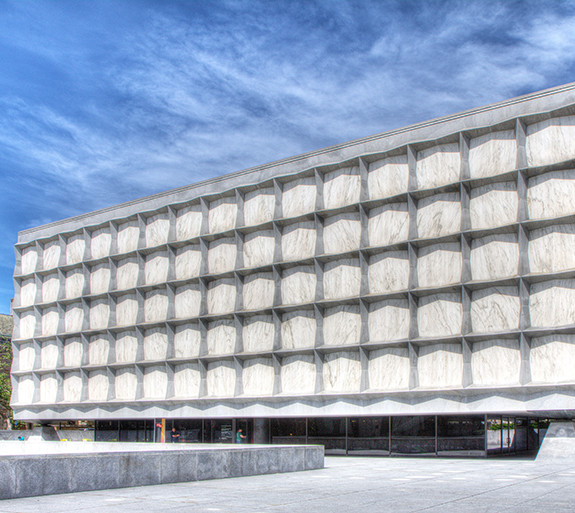By Kathryn James and David Kastan; from The Huffington Post
Shakespeare has always seemed too good to be true–or, for some, too good to be Shakespeare. The known biographical facts about the glover’s son from the small midland English market town of Stratford-upon-Avon frustrate our desire for a robust biography of the author of the works that have become, as Arthur Murphy wrote in 1753, “a lay bible.”
In 1794, a cache of documents came to light which offered to solve many of the mysteries that surrounded the life of England’s “demi-god,” including his own handwritten “Profession of Faith,” a letter to his wife-to-be Anne Hathaway (“Anna Hatherrewaye”), a catalogue of Shakespeare’s library, a deed appointing his actor friend John Heminges executor of his estate, specifying that should his plays be again republished, they be so from his “true writtenn Playes” rather than published “from those now printed,” and even a letter from Queen Elizabeth expressing her thanks for the “prettye Verses” he had sent her. The following year, continued searching turned up a manuscript of King Lear and a “small fragment” of Hamlet (Hamblette). The papers were publicly displayed and then published later in 1795 (dated 1796) in a large volume entitled Miscellaneous Papers and Legal Instruments under the Hand and Seal of William Shakespeare, and soon news circulated that even more papers existed, including manuscripts of Julius Caesar, Richard II, and two hither-to unknown plays: Henry II and Vortigern.
Understandably, the new discoveries created a furor of excitement. “How happy am I to have lived to the present day of discovery of this glorious treasure,” wrote James Boswell, the friend and biographer of Samuel Johnson. “I shall now go to my grave in peace.” And though sadly soon he would indeed go to his grave, quickly he must have been turning over in it. Everything was a forgery.
William Henry Ireland, the 19-year-old son of an engraver and art and antique dealer, had faked it all, beginning with a forged mortgage agreement between Shakespeare and Heminges, which he had written on a piece of old parchment he had taken from the records of the law office in which he worked.
In a sense it is amazing the young Ireland knew to forge so much and convince so many. But all-too-quickly the fraud was revealed. On 31 March 1796, Shakespearean scholar Edmond Malone published an exhaustive study of the documents, An Inquiry into the Authenticity of Certain Miscellaneous Papers and Legal Instruments, declaring them fakes, and though Ireland mounted an impassioned defense, Malone’s evidence was irrefutable, and Ireland eventually confessed the forgery.
What is perhaps most significant about this odd episode is not that it was attempted but that so many educated people were taken in by it. Once exposed, it seemed an obvious enough fake: the use of words not yet in use, reference to the Globe Theatre before it was built, and signatures that didn’t correspond at all to known examples (leading Ireland to claim, for example, that there were two actors named John Heminges).
But the desire for information about Shakespeare made people eager to believe, especially information that showed him intimate with aristocrats, even royalty. The known biography of the middle class man from the English midlands, who had come to London as an actor, seemed for many inadequate to explain the genius of England’s “demi-god.” Ireland sought to fill these gaps with his own inventions (nor would he be the last to do so); others would take another tack: suggesting that someone other than Shakespeare wrote the plays. Since the early nineteenth century, thousands of articles and books have been written arguing against Shakespeare’s authorship of the poems and plays, many by respected writers and thinkers convinced that “the man from Stratford” was incapable of it. It is an interesting list of doubters: “I can think of little else,” writes James Shapiro, “that unites Henry James and Malcolm X, Sigmund Freud and Charlie Chaplin, Helen Keller and Orson Welles, or Mark Twain and Sir Derek Jacobi.”
But what this all proves–the work of the forgers, the passion of the doubters, and the efforts of scholars for the last three hundred years–is that Shakespeare matters to us. We want to solve the mystery of his genius. In an exhibition, Remembering Shakespeare, on view at Yale’s Beinecke Library until June 4, the story of that desire is memorably told in books, objects, and pictures, from the earliest editions of Shakespeare and the handwritten evidence of his first readers, to the later Shakespeare editions that have spread the plays across the entire world and the non-literary evidence of their extraordinary impact. And all of it is real.
David Scott Kastan and Kathryn James are the authors of Remembering Shakespeare [Yale University Press, $25.00], and the curators of the accompanying exhibit.
